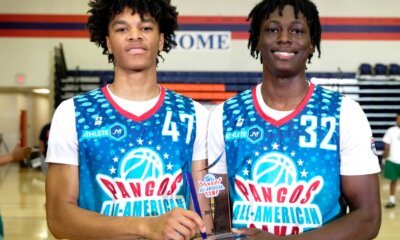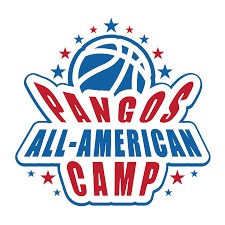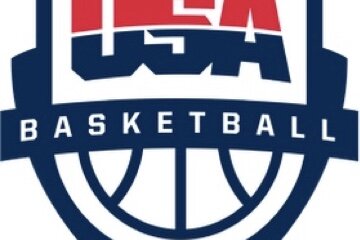
While it may not be recruiting, I couldn’t resist the temptation to jump on the bandwagon. It seems that every individual possessing a keyboard, microphone, camera or simply a heartbeat is weighing in on paying NCAA athletes. Although I’m joining the band, I won’t be playing the same tune that the majority appears to be tapping their foot to these days. There are plenty of folks on both sides of the fence but the public consensus seems to be tilting the scales towards writing checks and I’m going to have to differ with the majority…Imagine that!
First off, let’s address the sheer absurdity of the entire conversation in the first place. Depending on what study or report you subscribe to, in any given year less than 50 (and I’m allowing for considerable breathing room) Division I athletic departments operate in the black. Just to be clear, that’s not less than 50 percent, it’s less than 50 total out of the 351 who will compete at the NCAA’s highest level this year. So, while a select few may be collecting more than they spend, most are more “congressional” on their balance sheet with “red” being their school color rather than green.
The average fan, parent or even some of the athletes see the big revenue schools reporting their profits and seem to develop a blind spot when looking at the overwhelming majority who seldom produce an annual report that would keep their stockholders happy. Going a step further, not even all of the programs on the plus side are doing it as a self-sustaining entity. Quite a few receive various subsidies including some from student fees. There’s a good conversation to have. Let’s tell the average loan strapped, scraping by, part time working student that a portion of your fees are now going to provide a cash stipend for athletes over and above the value of a full scholarship. That should go over well.
Time and again you hear a reference to the revenue that the players generate. Indirectly that may be true but not in the generally accepted sense. The reason the stadium at Ohio State is full each weekend isn’t quarterback Braxton Miller. He may be the Buckeye Du jour but he’s not why the Horseshoe is wall to wall scarlet and gray on every home Saturday. While OSU doesn’t exactly meet the criteria or definition of a cult, their fans, while extraordinarily fickle, are true believers and will wear the colors regardless of who’s in uniform…and they’ve done so clear back to the days of Hopalong Cassidy. The commodity is in the brand of the institutions themselves more so than it is the players currently wearing the jersey.
Oh, there’s no doubt that a once in a lifetime, record breaking, game winning addition to the roster of a nontraditional power can send ticket demand, TV revenues and merchandise sales through the roof. Those schools are scrambling to capitalize recognizing that their current chart topper may just be a one hit wonder. But if you’re talking Alabama football, Duke Basketball or any other of the consistent money making programs, they know they can count on those income streams regardless of who’s suiting up or even in their worst seasons.
If you believe that the athletes themselves are the main attraction then explain why the ever greedy NFL has never created their own minor league system ‘a la Major League Baseball. Logic says that such a focused scenario would better prepare players for Sunday afternoons, allow the control that the NFL is constantly obsessed with and eliminate any pretense that participation was for any other reason…like the caveat of those silly, meaningless college degrees. It’s a safe bet that such an endeavor wouldn’t produce 100,000 plus folks in the stands nor the traditions, tailgates or tapestry of the college game let alone the revenue. If all of the blue chip recruits began suiting up for the gridiron version of the Durham Bulls the OSU stadium in Columbus would continue to be full and the marketing gurus of minor league football would be enduring headaches, half full venues and “helmet night” giveaways.
Before we take another step towards making withdrawals on the behalf of full scholarship student athletes let’s make sure we also take a broader look at the debit side of the ledger in an entire athletic department. Just because a football or men’s basketball program generates a profit doesn’t necessarily mean that there’s automatically a deep pool of resources to dip into for a stipend. Like any corporate setting, one division of an entity often covers for others that are not providing a return on investment. A very minimal line up of required sports for NCAA Division I classification (with football) will entail 14 different programs and over 300 student athletes. Hardly an inexpensive endeavor! Nobody roots harder for their teams to become bowl eligible or make the big dance than those coaches in sports whose budget increases are tied to the overall success of the athletic department. It may take a village to raise a child but it takes a metropolis to fund an entire athletic program.
Before we break out the checkbook, let’s put the debate to raise the debt ceiling and the financial impact on a whole department aside and consider other relevant elements requiring scrutiny. First off, a full scholarship student athlete receives room, board, tuition, books and required fees in return for their athletic participation. Nobody is naïve enough to believe that an individual can make it through four or five years on those resources alone. At the same time there seems to be a minimization of the value once placed on the opportunity to have your education paid for. The reality of a college degree is that it often matures like a savings bond yielding returns well down the road long after the investment of pay or perspiration by average students and athletes. The growth and big business aspect of college athletics as a whole doesn’t necessarily necessitate reformatting the amateur model or entitle the athletes to a slice of the perceived pie.
Often the focus and rationalization of proposed athlete payments is on the total cost of education. Each school has a figure (which varies by institution, setting, etc…) of costs above and beyond actual tuition, room, board, books and fees. In essence…the cost of everyday student life and living it. Those in favor of offering up a cash allowance generally use this figure in trying to frame their argument. This calculated cost is no higher for the athlete than it is for any other student on campus and, again, nobody is denying that there are costs beyond the scholarship itself. The ongoing question is just who should meet that obligation.
One element of the financial aid eligibility formula for the student body as a whole is “expected family contribution”. Generally when the conversation turns to the starving, socially limited, and grossly exploited student athlete, the discussion is of the scholarship itself and what more the school or NCAA should be providing. One tenant of the NCAA has always been to keep the student athlete, at least to some degree, on the same plane with the rest of the undergraduates wandering campus. It’s not fair to expect the family of an agricultural science major to carry some of the burden if you don’t have the same expectations of those who love the ones recruited and provided for by the athletic department.
The contention that it is difficult, if not impossible, for an athlete to work has plenty of validity to it. But before we start sympathizing too quickly, let’s do some math. According to collegedata.com, the average cost for the current academic year at a moderately priced, in state public school is $22,261 and $43,289 for a similar moderate level private school. That makes the median cost in the bigger scheme of things a bargain price of $32,775. So before we continue to downgrade the value of a “full ride” as it stands, let’s do some more math.
For the sake of simplicity, let’s take a wage of $10 an hour and stipulate to the court that it would take working 3277.5 hours to cover our determined average cost. Whether you’re an athlete or an academic, there’s only so much time beyond the classroom and at least a minimal commitment to studying, writing, research etc…to actually “work” (or lift, practice and compete as the case may be). The NCAA may claim that the maximum hours permitted for athletic related activities is 20 hours a week in season (Just 8 in the off season) but anyone possessing an element of rational thought comprehends that standard is excluding plenty of other sport related obligations and activities. So, for the sake of illustration, let’s go with 30 hours a week year round at that $10 an hour compensation. Whether you’re laying it all on the line for D-I Sports Inc. or reeling off the specials while taking orders tableside at TGI Friday’s it’s going to take you 109 weeks to cover the cost of just one academic year. Oh yeah, don’t forget that our non-athlete, agricultural science major will come up short having to pay social security and taxes whereas the athlete can claim a win over the IRS insofar as their scholarship is concerned.
And let’s not forget the fact that, if eligible, a full scholarship athlete can keep funds from Pell grants for their personal use since their basic educational needs are met by their athletic aid. They’re also permitted to retain any need based award (no athletic component) through the filing of a FAFSA. Given that the basic premise of a full scholarship athletic financial aid agreement is educational opportunity and resources in return for training and competing…it’s not the kind of situation the department of labor is going to cry foul over. Chances are that our old friend the agricultural science major will have to apply any grant he or she might receive to next semester’s bill or start preparing those student loan applications since there just aren’t quite 109 weeks in the calendar year. Our athletic full ride financial aid recipient, with their basic bills covered, is filling out a deposit slip.
However, some choices athletes make do have an impact on the shallow depth of their pockets. Nobody is forced to live off campus. Those who do cut the university umbilical cord, decide where to live, how many roommates to have, as well as where and what to eat. In lieu of the dorm and cafeteria they get a monthly stipend, the divided equivalent of the value of campus housing and a meal plan for the academic year. How far that goes is up to them. When you hear an athlete complaining about an inability to pay their rent or that they have nothing to eat, it means they’ve made some poor financial decisions either up front or over the course of the past month. Failure to make good decisions and budget their money is not the responsibility of the athletic department. I’m willing to bet a big chunk of the student body as a whole would be content with the ole’ dorm room and eating off a tray if someone else would pick up their tab come tuition time.
An athlete “getting their own place” also often necessitates transportation. Yes, plenty of them are without wheels, catching the bus, riding a bike or nursing an old Taurus down the road. But stick around after practice sometime and you’ll see some awful nice cars rolling out of the parking lot and it’s a safe bet that not all of them were purchased from Auto Trader magazine. Often, by virtue of an athletic scholarship, parents who have saved for their child’s education over the years will utilize some of the suddenly available funds to put their pride and joy behind the wheel of a new ride. Mobility, safety and reliability are sentiments that are easily appreciated but down the road it’s hard to profess hardship from the front seat of something with less than 5000 miles on it.
Yes, scholarship athletes do bring physical aches and pains home from “work” and endure the challenge of missed classes. However, today’s student athlete misses less class time than ever before and generally travels (All apologies to Grambling football) in more comfortable and efficient modes of transportation. Thanks to the competitive environment of recruiting, the facilities enjoyed by programs today (playing, training, locker rooms) are approaching levels that should shame any individual each time they encounter the homeless or unemployed at the top of an exit ramp. Those looking for their next meal or a roof over their head aren’t comforted in knowing that the weight room floor is made of Brazilian hardwood or that there are built in phone chargers in each athlete’s locker.
Academically, for the most part, athletes have their pick of classes and are compelled to suffer through priority registration. And then there’s the burden of unlimited free tutoring and exclusive athletic academic resources. They’re forced to accept closets full of Nike or adidas gear, travel expense free on a foreign tour or endure time in Hawaii, Mexico or the Caribbean. The training tables that athletes in some programs are eating from feature fare of the quality and nutritional content well beyond the standards of Diners, Drive Inns and Dives. A few even proclaim to have their own “chef” on staff. Additionally, you can’t overlook the energy bars, Gatorade fountains and healthy snacks readily available. It’s a shame John Boehner and Harry Reid have yet to put the suffrage of the scholarship athlete ahead of minor issues like the federal budget.
Even without the addition of any proposed payments, the student athlete gig is a much better thing than its being portrayed these days. Don’t get me wrong. I’m all for an athlete having the most and best resources available to succeed in uniform and the classroom. However, the opportunity to make money as an athlete already exists in the form the NBA, WNBA, NFL, MLB and a host of others. The mentality of entitlement that permeates athletes and those around them these days tends to overlook the truly “elite” standard for professional sports. A small percentage of high school athletes will get their education paid for by way of their sport and a miniscule number of those will ultimately have the opportunity to cash a paycheck for their performance. While amateur (there’s that word again) college athletics may indirectly prepare individuals or serve as de facto minor leagues, it is not remotely their mission or obligation.
Being on scholarship doesn’t qualify as a birthright nor is it a guarantee that every need will be met. The path of any college student is challenging and filled with personal potholes, financial roadblocks and one detour after another. A valuable element of an education comes from navigating all of those issues and learning that every difficulty won’t be resolved by mom, the athletic department or some extra cash in your pocket. The financial success of a limited number of programs and the perceived resources of big time athletics has watered down the appreciation for a scholarship, what it provides and where it can lead. Instead it’s led to athletes to embrace the perspective of the little girl in a Geico commercial who squeezes the word “more” six times into just a 30 second spot.
Mark Lewis is a national evaluator and photographer for Blue Star Basketball as well as the lead columnist for Blue Star Media. Twice ranked as one of the top 25 Division I assistant coaches in the game by the Women's Basketball Coaches Association (WBCA), he logged 25 years of college coaching experience at Memphis State, Cincinnati, Arizona State, Western Kentucky and Washington State. Lewis serves as a member of the prestigious McDonald’s All-American selection committee as well as the Naismith College Player and Coach of the Year committees.

Latest Articles
-
Christopher Lawlor
/ 13 hours agoSPEARHEADED: Americans crush Brazil by 79 points at FIBA U16 AmeriCup quarterfinals; Marcus Spears Jr. puts up 16 points and 9 rebounds
JUAREZ, Mexico — The USA men passed its first test in the knockout stage...
-


Christopher Lawlor
/ 3 days agoSTARS SHINE: Bailey, Costello earn Co-MVPs at 23rd Pangos All-American Camp in Las Vegas; three Santa Margarita (CA) players recognized
LAS VEGAS – The Pangos All-American Camp did not disappoint. For three days the...
-


Christopher Lawlor
/ 5 days ago23rd Pangos All-American Camp tips off in Las Vegas with nation’s elite players congregating for national showcase event
LAS VEGAS – The summer circuit is nearly two months old but it really...
-


Christopher Lawlor
/ 1 week agoU16 USA Women’s Basketball National Team roster selected for 2025 FIBA AmeriCup in Mexico from June 16-22
COLORADO SPRINGS, Colo. — USA Basketball announced today the 2025 USA Women’s U16 National...




